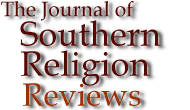

| "Wigger's declared aim is to recover and interpret the lives of the early Methodists, and by exploring their influence on the wider culture, and it on them, to understand the dynamics of Methodist growth in the United States in the half century before the 1820s." | |
| "Wigger describes women as the 'backbone' of Methodism, not just because they were in the majority but because of their role as 'the movement's primary community builders' in an age when the lack of churches gave special salience to the home." | |
| "The [Methodist] preachers were no 'backward looking traditionalists' but were at home amongst 'the rising middle classes' of the new capitalist order." | |




